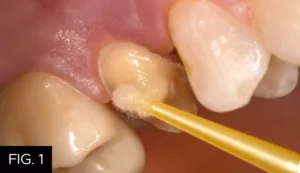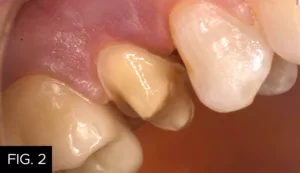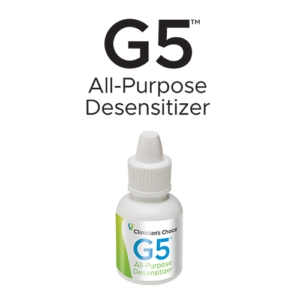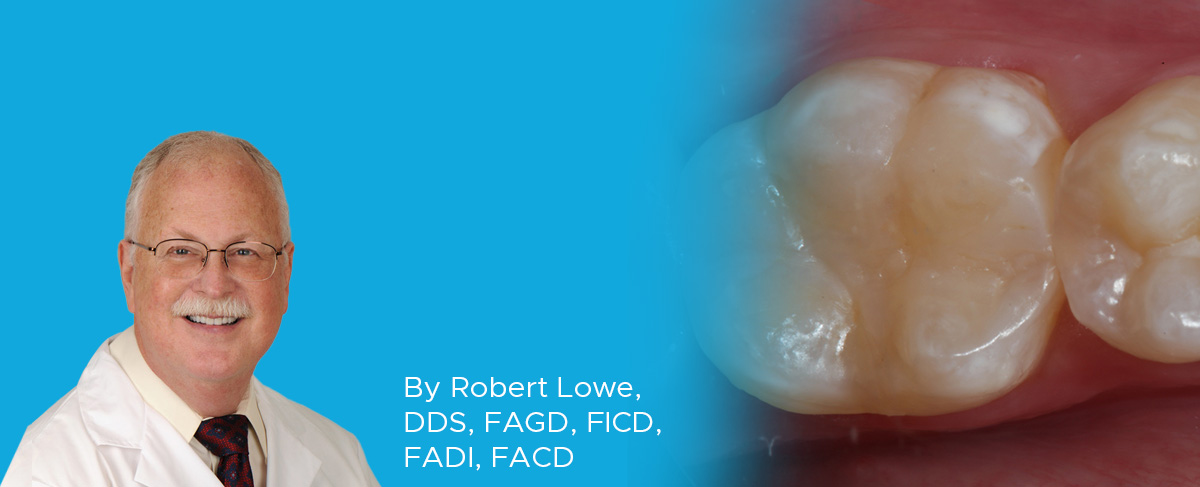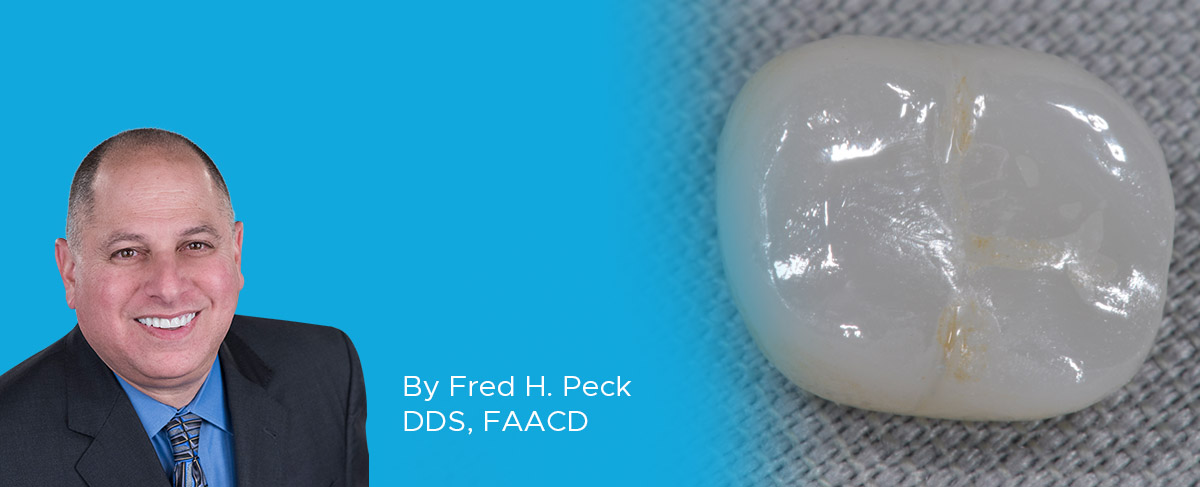
Desensitization Protocol for Crowns Using G5
By Harald O. Heymann DDS, MEd
COMPOSITION AND EFFICACY
G5 is a time and research proven desensitizer that works to prevent post-op sensitivity when placed under virtually any type of dental restoration. Based historically on the formulation of a dentin primer, G5 contains 5% glutaraldehyde, 35% HEMA, and water: a simple but highly effective composition.
CLINICAL PROTOCOL
Achieving optimal isolation prior to any cementation procedure is essential.
-
Prior to crown cementation, remove the temporary crown and clean the preparation of residual cement and debris. Air dry.
-
Using a microbrush, apply G5 sparingly using a scrubbing action on all surfaces of the tooth preparation for 30 seconds. (FIG. 1) Avoid contact of G5 with soft tissue.
-
After application, rinse the residual G5 from the tooth with a gentle stream of water for 5 seconds. (FIG. 2)
-
If using GI, RMGI, Zinc Phosphate or other non-bonding cements, blot away excess moisture and proceed with cementation according to manufacturer’s instructions.
-
If using a conventional adhesive resin cement, air dry or leave moist according to manufacturer’s instructions.
HOW DOES G5 WORK?
- G5 is bactericidal owing to the glutaraldehyde. Like chlorhexidine and other cavity disinfectants, it kills the “bugs.”
- Unlike most cavity disinfectants and desensitizers, G5 forms a series of “coagulation plugs” in the dentinal tubules, thereby reducing dentin permeability and fluid flow, critical keys to desensitization (based on Brännström’s Hydrodynamic Theory of Dental Pain). G5 does so by coagulating the plasma proteins (serum albumin) in the dentinal tubules.
- G5 is a very effective cross-linking agent (flocculant) that toughens the collagen to which dental primers bond through hybrid layer formation.
- G5 also has been shown to effectively resist the adverse effects of MMPs, proteolytic enzymes that if activated can deteriorate the dentin/resin bond.
It should be pointed out that G5 does not adversely effect bond strengths of any resin bonding agent or of any cement. It is unique among desensitizers in this regard.

ABOUT THE AUTHOR
Dr. Heymann is active in the clinical research of esthetic restorative materials and is the author of over 200 scientific publications. He is a member of the Academy of Operative Dentistry, the International Association of Dental Research, and is Past-President and a Fellow of the American Academy of Esthetic Dentistry. He is also a Fellow in the International College of Dentists, the American College of Dentists, and the Academy of Dental Materials. He also has served for many years as a consultant to the ADA. Dr. Heymann also has been the Co-Senior Editor of The Art and Science of Operative Dentistry, historically, the #1 selling dental textbook in the world. Dr. Heymann is also the Editor-in-Chief of the Journal of Esthetic and Restorative Dentistry. Dr. Heymann has given over 1,600 lectures on various aspects of esthetic dentistry worldwide and has received the Gordon J. Christensen Award for excellence as a CE speaker.
Products Mentioned in this article
Related Articles
Optimizing Aesthetics and Predictability in the Placement of Posterior Composite Resin Restorations
By Robert Lowe, DDS, FAGD, FICD, FADI, FACD
The term “universal” seems to be used frequently in the adhesion/composite resin materials world today. It has always been a struggle to find such a material that can adequately replace two very different types of tissues, namely enamel and dentin. Dentin is more opaque yet resilient, while enamel is
An Effective Ceramic Polishing Technique in Everyday Practice
By Fred H. Peck, DDS, FAACD
Placing permanent ceramic restorations in our patients’ mouths is an everyday occurrence for the restorative dentist. These restorations help to restore lost tooth structure, stabilize the occlusion, replace missing teeth, and improve esthetics. The final surface texture must be smooth and polished for patient comfort and to prevent damage to opposing teeth.
Predictable and Efficient Single Unit Crown Restorations
By Bob Margeas, DDS
A 55-year-old patient presented to my office with tooth pain upon biting from his second bicuspid. Upon further examination a crack was noted on the mesial marginal ridge.
JUST TAKE A MINUTE: A Step-By-Step Guide to Clinical Efficiency – Clinical Article
The sheer volume of information on dental materials and techniques at our fingertips is staggering, but having the right information is vital to providing the best care possible.

